spies a potential target this morning.
Cooper's Hawk (Astur cooperii).
spies a potential target this morning.

Cooper's Hawk (Astur cooperii).
has assaulted the feeding stations, numbering nearly 100 voracious individuals. Here are just a couple.
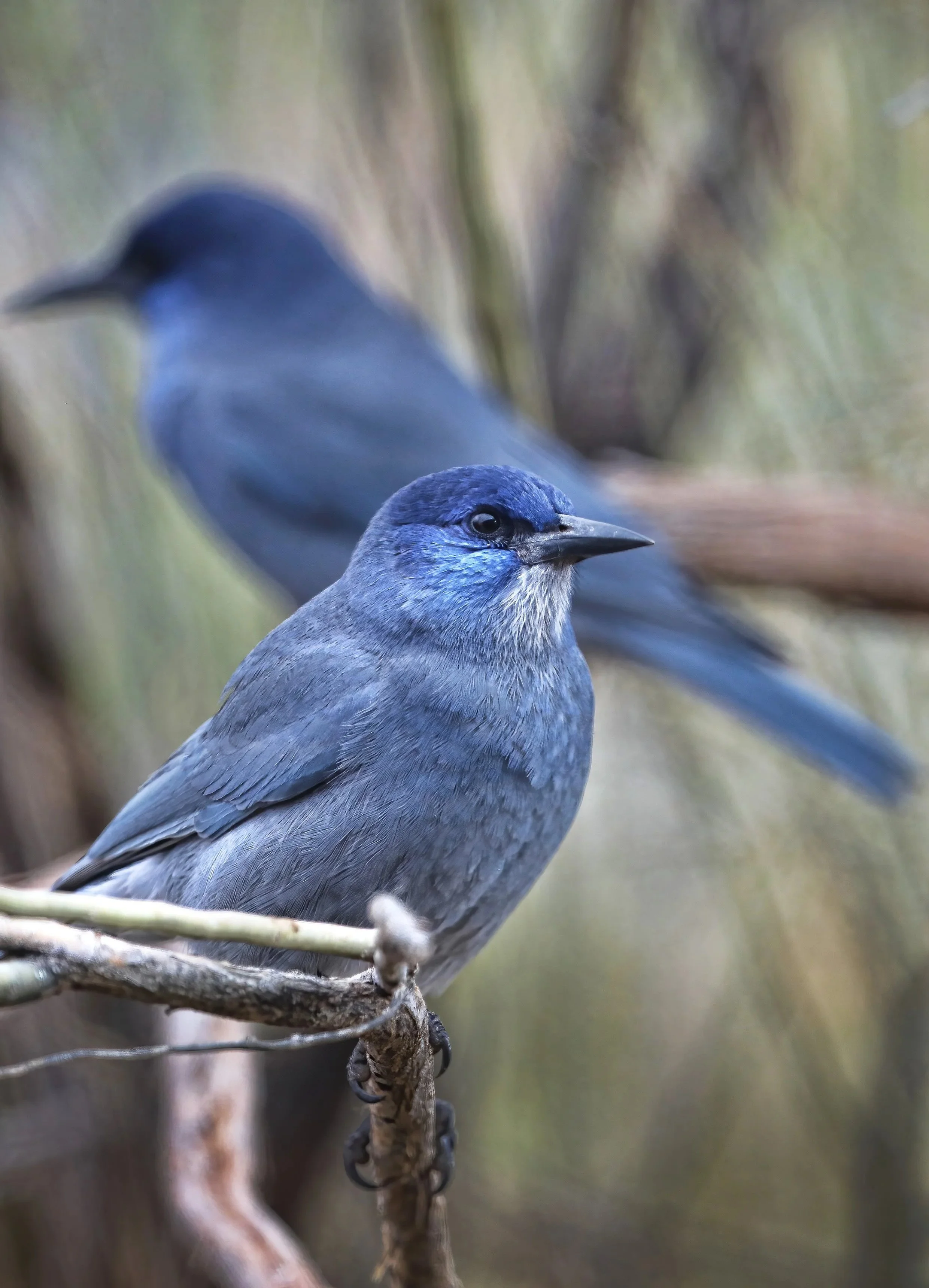
Pinyon Jay (Gymnorhinus cyanocephalus).
with its winter coat on in response to the first hard freeze overnight as it stakes out the feeding stations the following morning.

Juvenile Cooper’s Hawk (Astur cooperii).
in the bright sun, presenting perfectly posed profiles to the camera this afternoon. It’s also quickly becoming tolerant of my close by presence.

Juvenile Cooper's Hawk (Astur cooperii).

this patiently perched raptor isn’t leaving without breakfast. This handsome bird is now a near daily sighting around the feeding stations.

Juvenile Cooper's Hawk (Astur cooperii).
is being enjoyed in the bird bath. Unfortunately this opportunity won’t last much longer as the irrigation system is being winterized tomorrow.

Western Meadowlark (Sturnella neglecta).
near the feeding stations this morning, waiting patiently to grab brunch.

Juvenile Cooper's Hawk (Astur cooperii).

UPDATE: The following morning, with the Sun at its back, hunting for breakfast.
gathers around dusk. They’re pretty regular visitors at the birdbath late in the day.

Western Bluebird (Sialia mexicana).
of Common Ravens in Castle Valley this year, or so it seems.

Common Raven (Corvus corax).
the replenished feeding stations while the rock squirrels enjoy the bath.
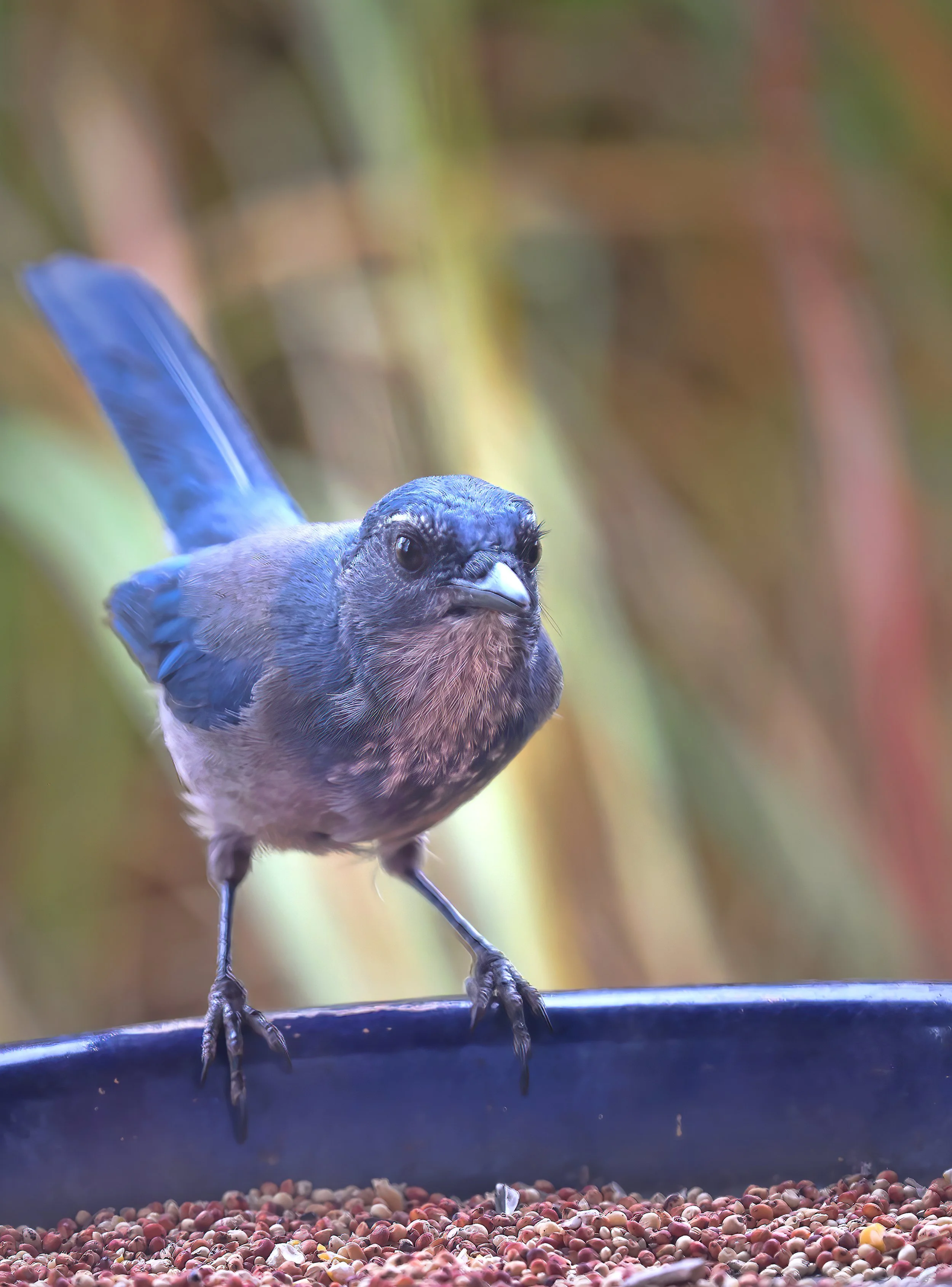
Western scrub-jay (Aphelocoma californica).
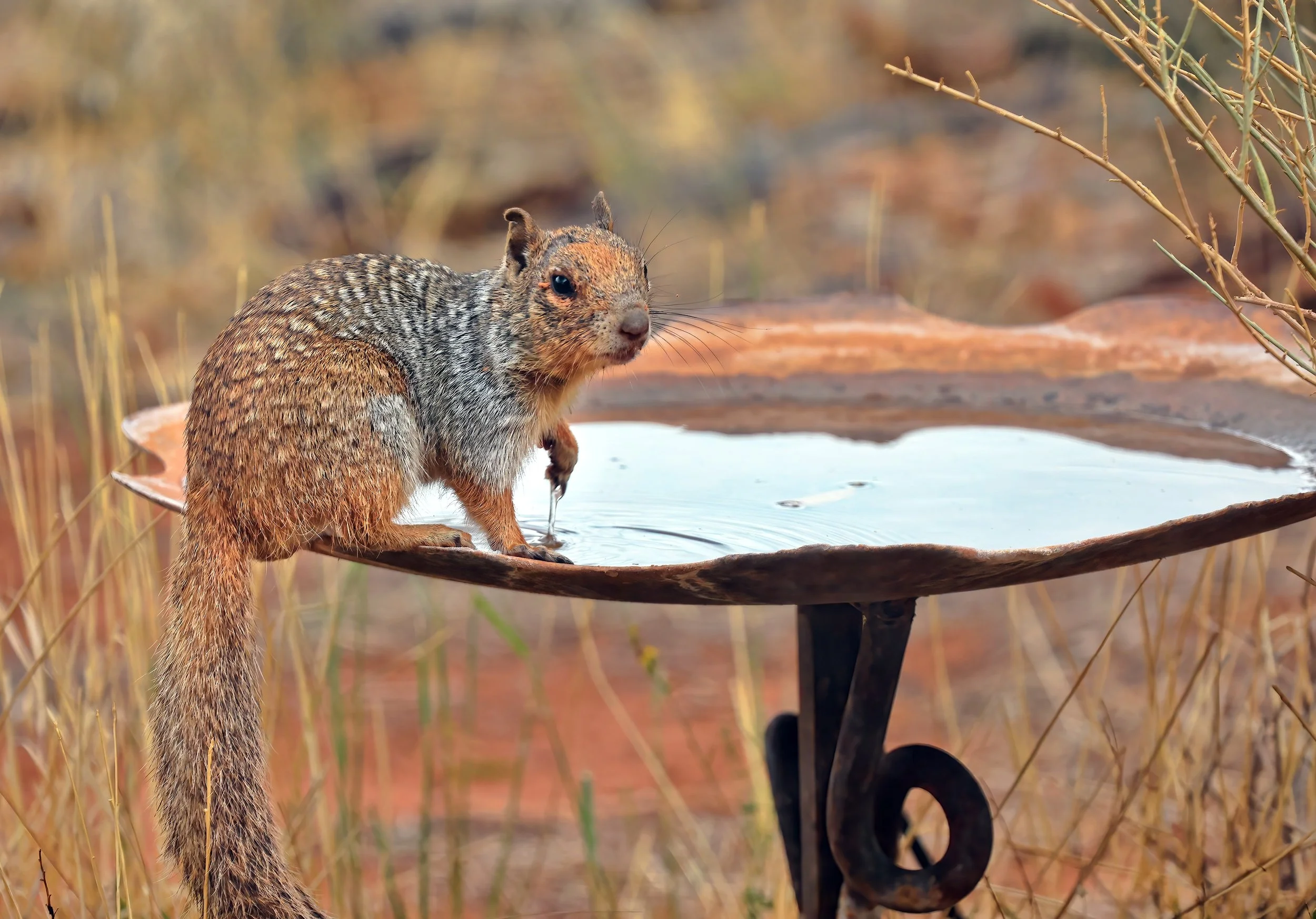
Rock squirrel (Otospermophilus variegatus).
on Parriott Mesa for the first eight months of the year advises a new sign at the trailhead to the mesa top. How ironic that one shows up off season?!


for a fishing Osprey on a ponderosa pine snag, observed today attempting to grab breakfast from a wetland pond, though unsuccessfully.
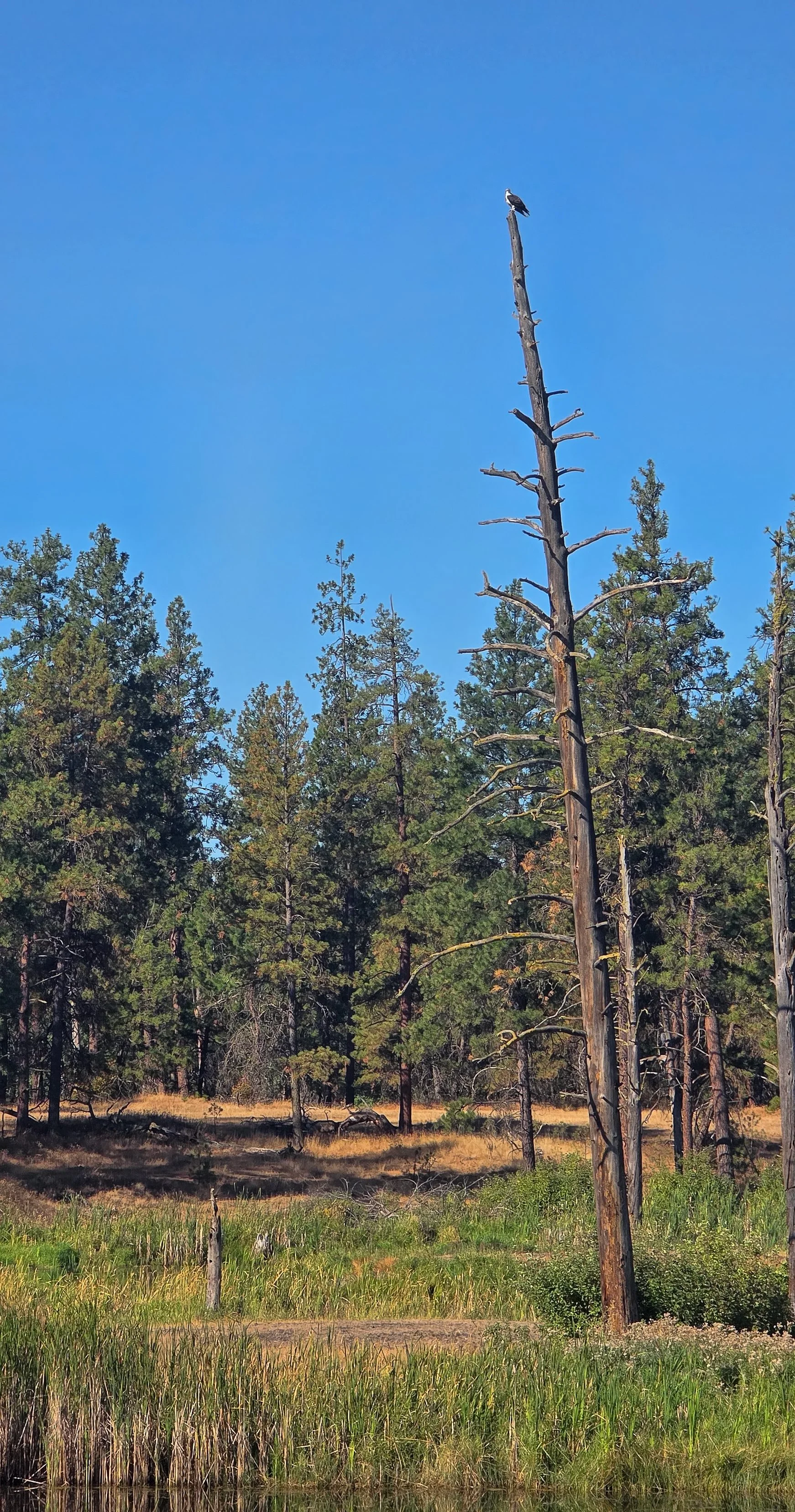

Osprey (Pandion haliaetus).
working a wetland pond for breakfast as a united flotilla, seemingly surrounded by glistening diamonds due to strong backlighting by the Sun. Between these and the Osprey, the fish that occupy these pools don’t stand a chance.

American White Pelican (Pelecanus erythrorhynchos).
together this afternoon, caught at the moment when Mama Osprey takes off - seen below - and Junior launches shortly thereafter with little fanfare. Godspeed, Junior!

Osprey (Pandion haliaetus).
by Mama Osprey, yet again, this evening. She’s going to have to starve this capable fledgling in order to get this nest potato to launch.

Osprey (Pandion haliaetus).



continues through another evening with Junior content to hang out at the platform nest while Mama Osprey continues to deliver fresh fish.

Mature female ‘Mama’ Osprey (Pandion haliaetus) perched nearby and calling to Junior on the platform nest.
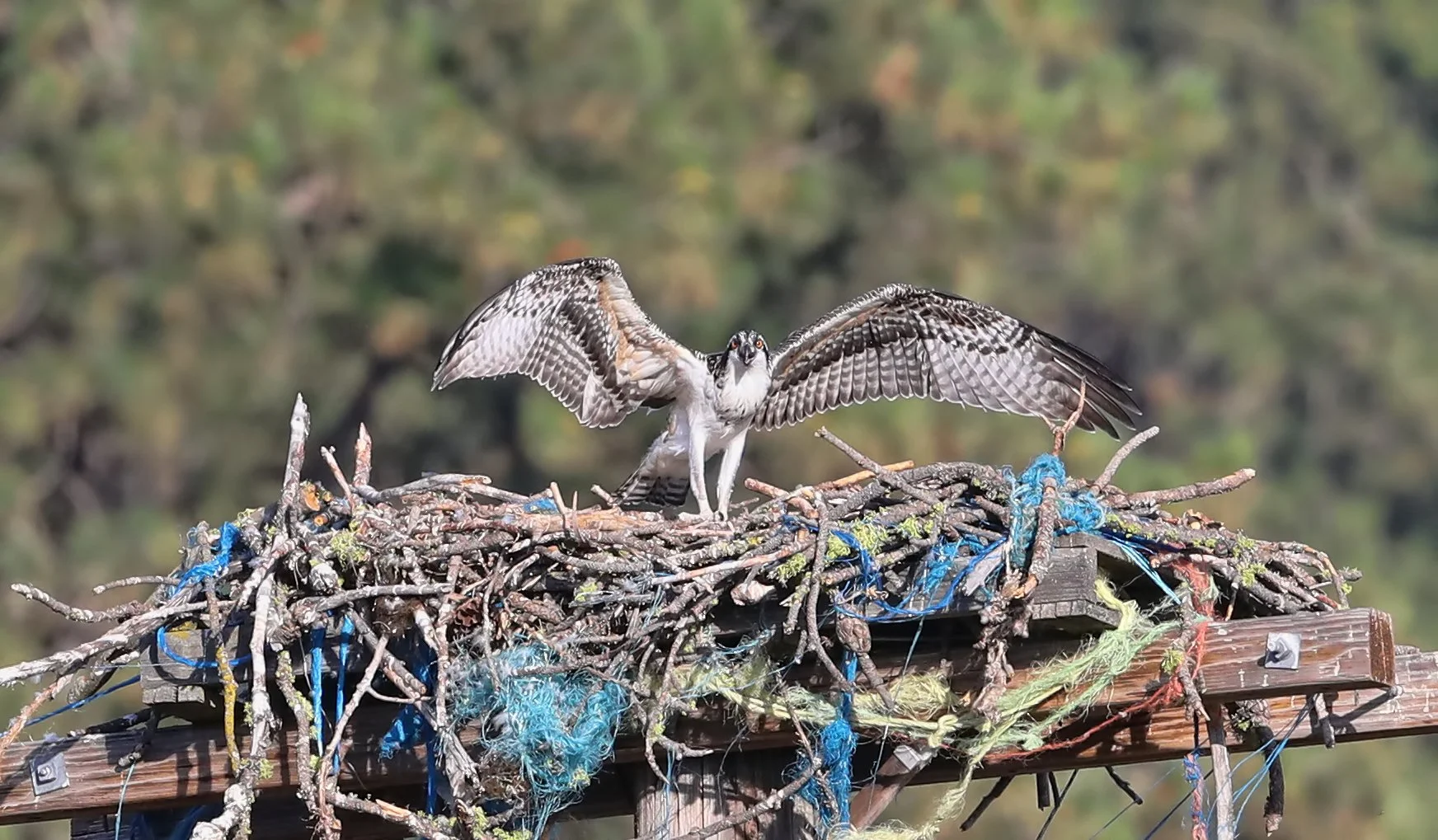
‘Junior’ Osprey discovering and exercising its wings while waiting for a free meal. It’s fully capable of flight and just needs to take the big leap.
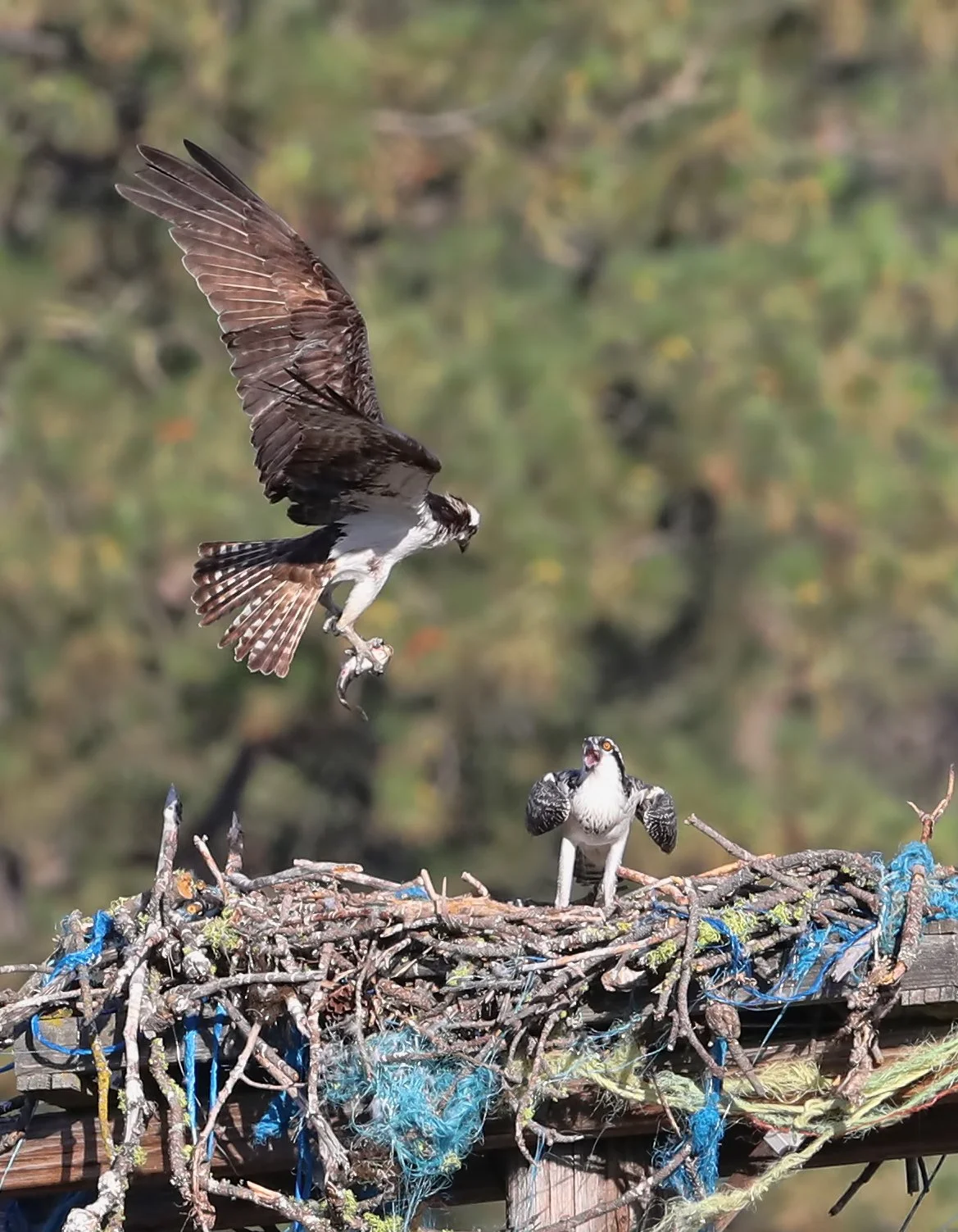

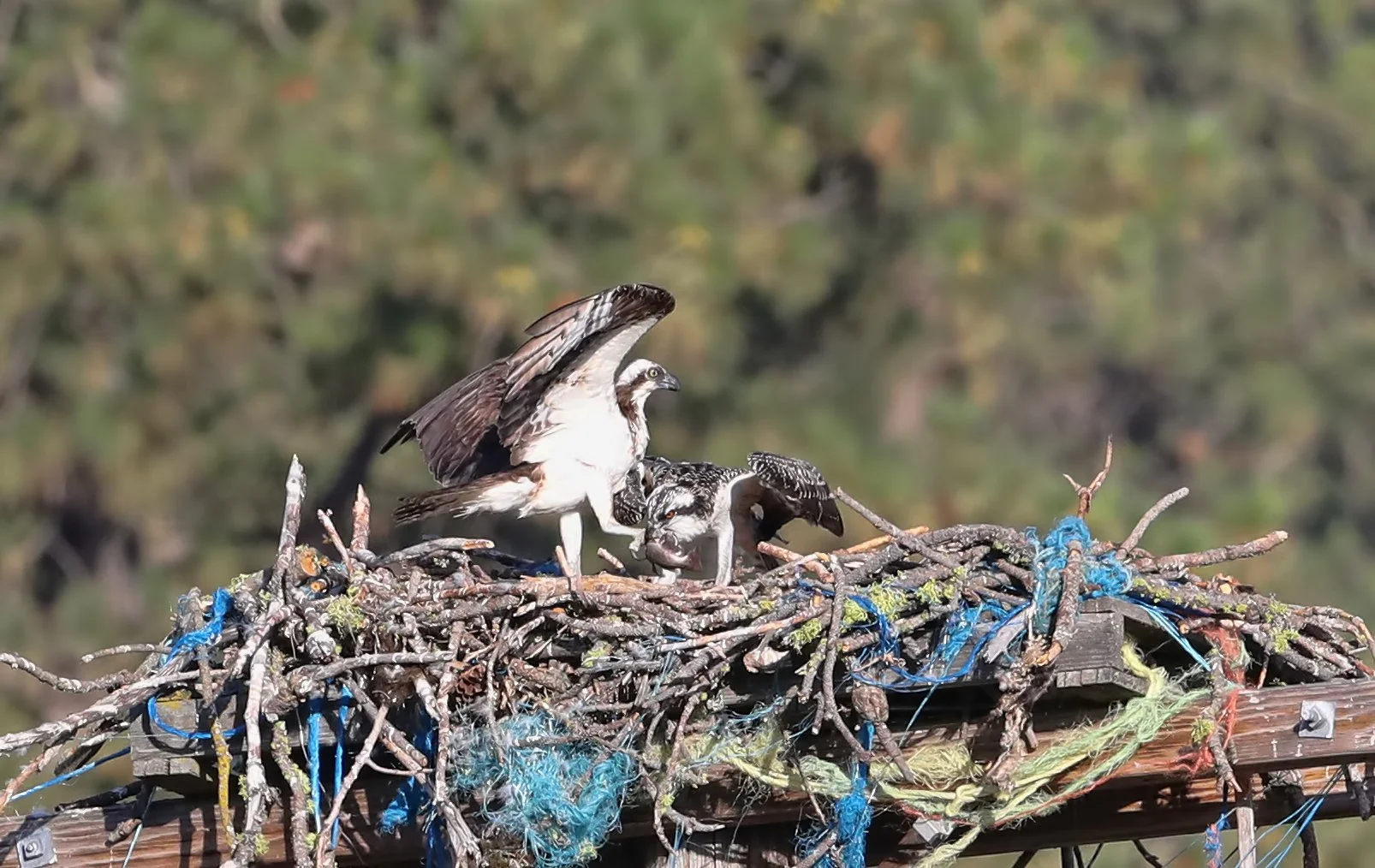
The tempo of life of a wildlife photographer is somewhat similar to that of a soldier: Long periods of interminable boredom punctuated by brief moments of intense chaos.
today because Mama keeps feeding Junior fresh fish. Why leave home and work for food when you can have it delivered, the avian equivalent of Grubhub or DoorDash?

Osprey (Pandion haliaetus) with fish in talons.

consisted of short hops and hovering maneuvers this morning and late afternoon, no more than five to ten feet (2-3 m) above the platform nest, nicely oriented into the stiff breeze. Tomorrow’s the big graduation day, I’d bet.

Juvenile Osprey (Pandion haliaetus).



works the wetland pond, as if mowing the lawn back and forth, herding and gulping carp in the process. Seems quite successful.

American White Pelican (Pelecanus erythrorhynchos).

Telephoto images caught with my smartyphone. Not bad.
projectile pooping in the preferred direction from the nest platform. But mother Osprey (not seen here) could be a better housekeeper.
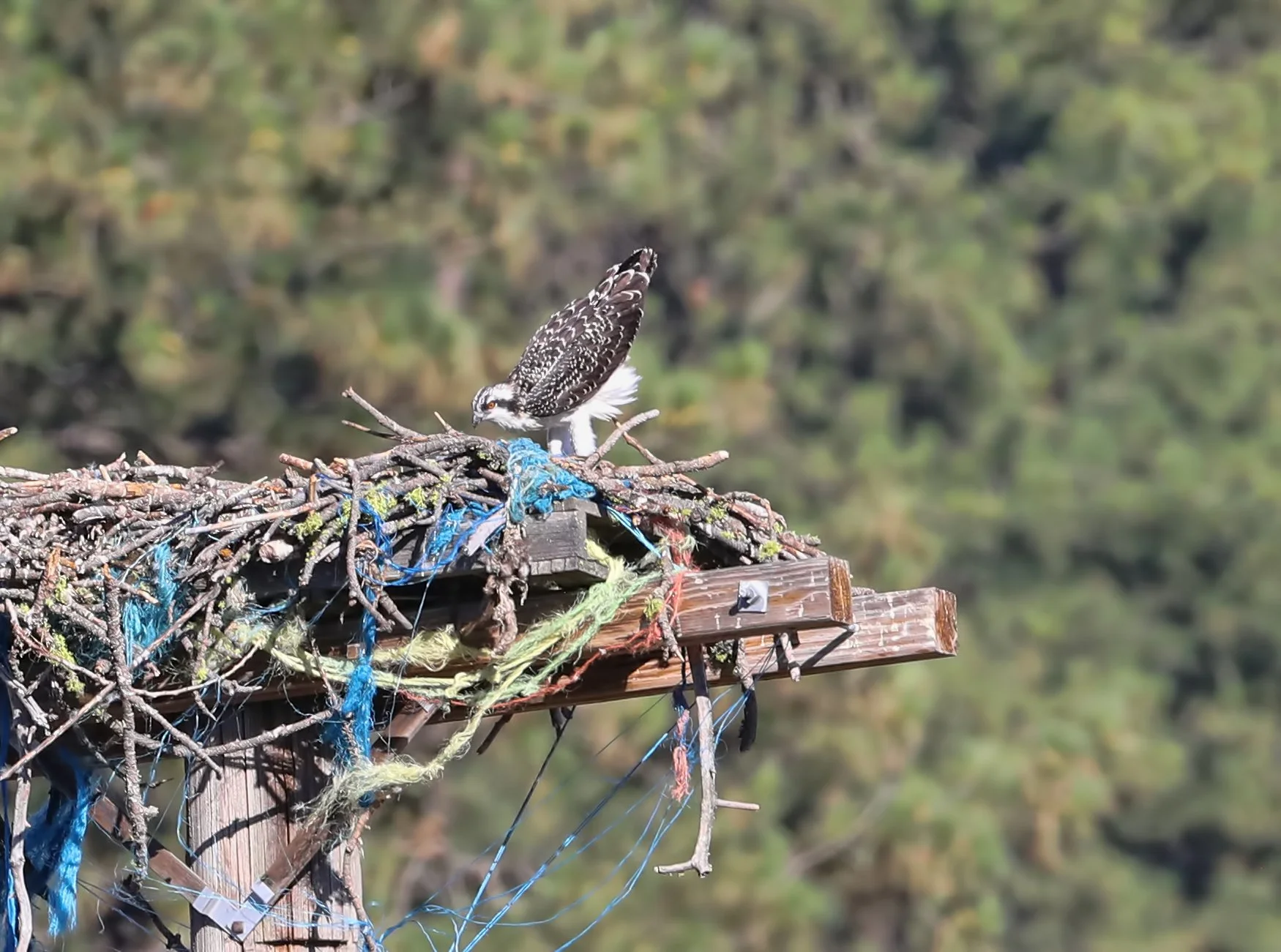
Juvenile Osprey (Pandion haliaetus) assuming the position in the platform nest.
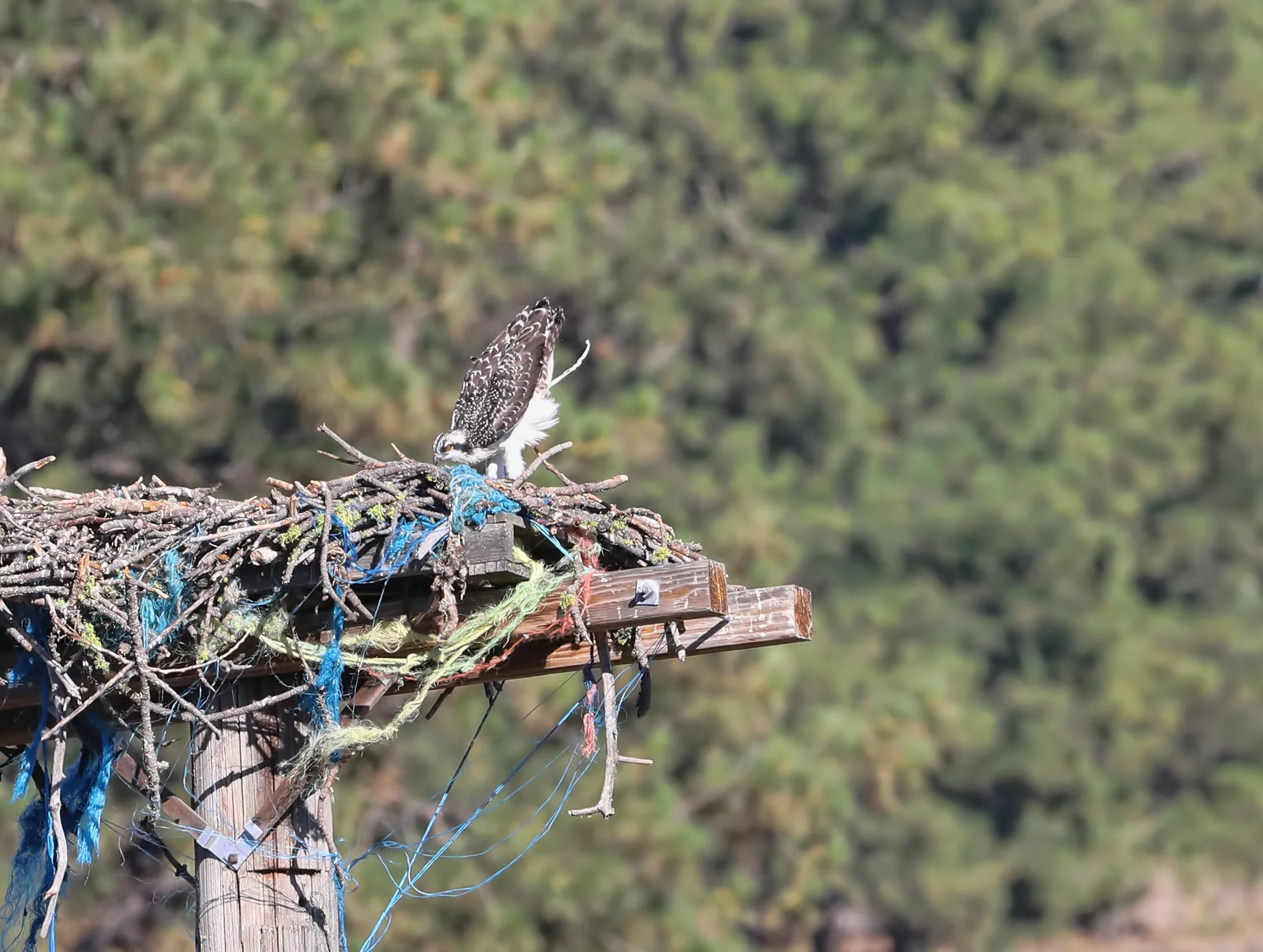
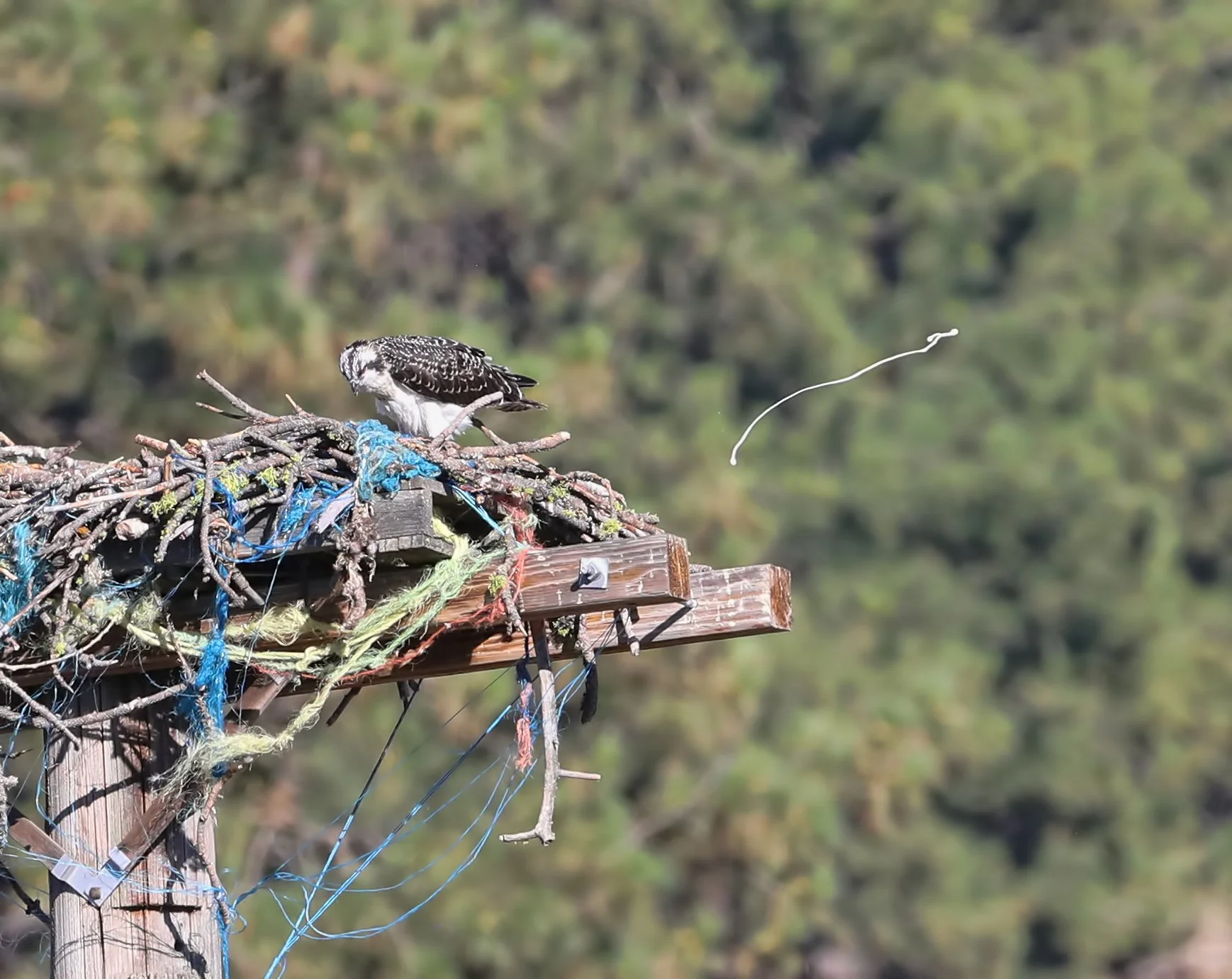
It’s amazing what you can capture at 120 yards (110 m) with a 500 mm prime lens, shooting at 1/1,000th of a second.